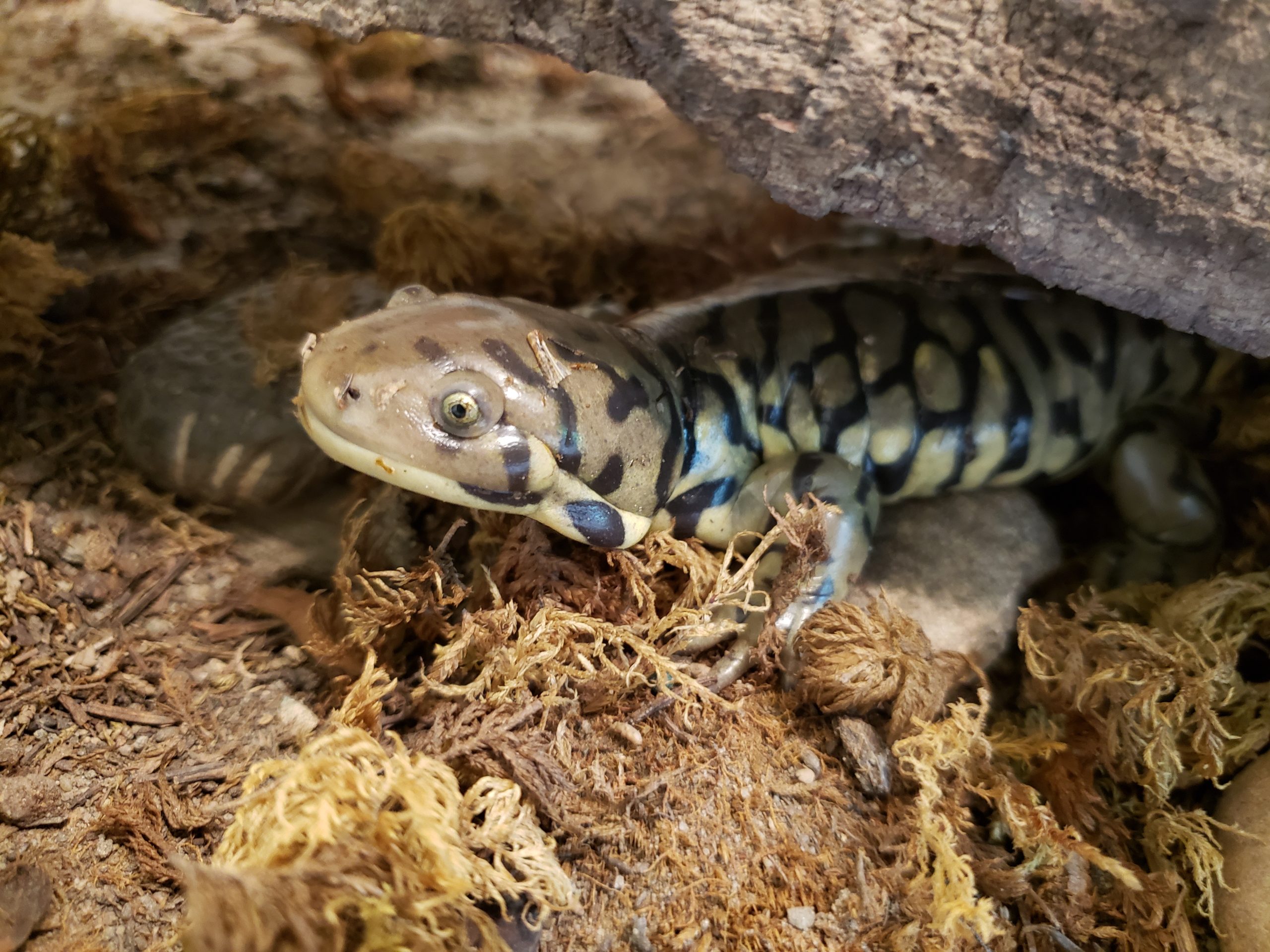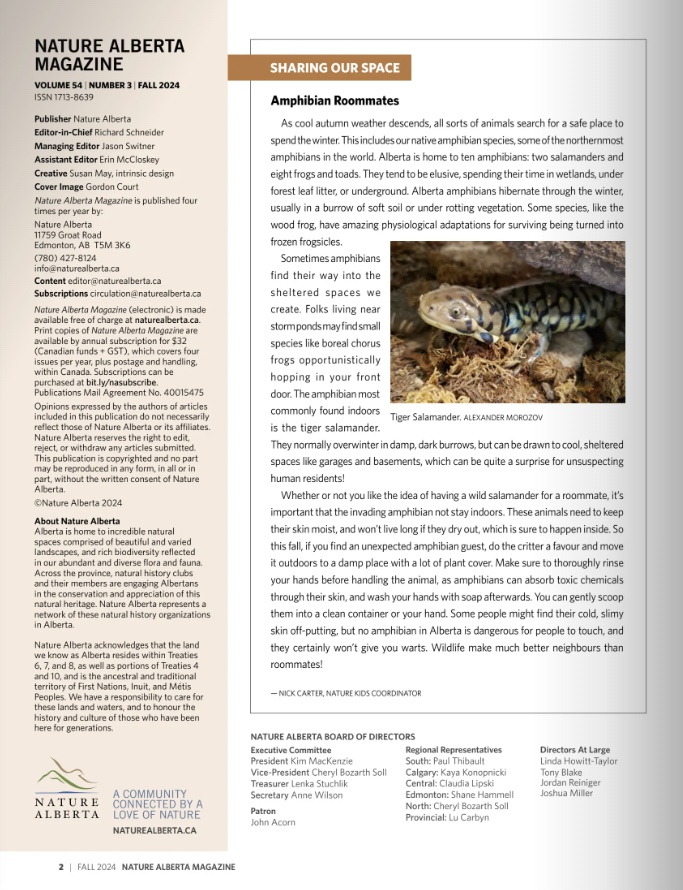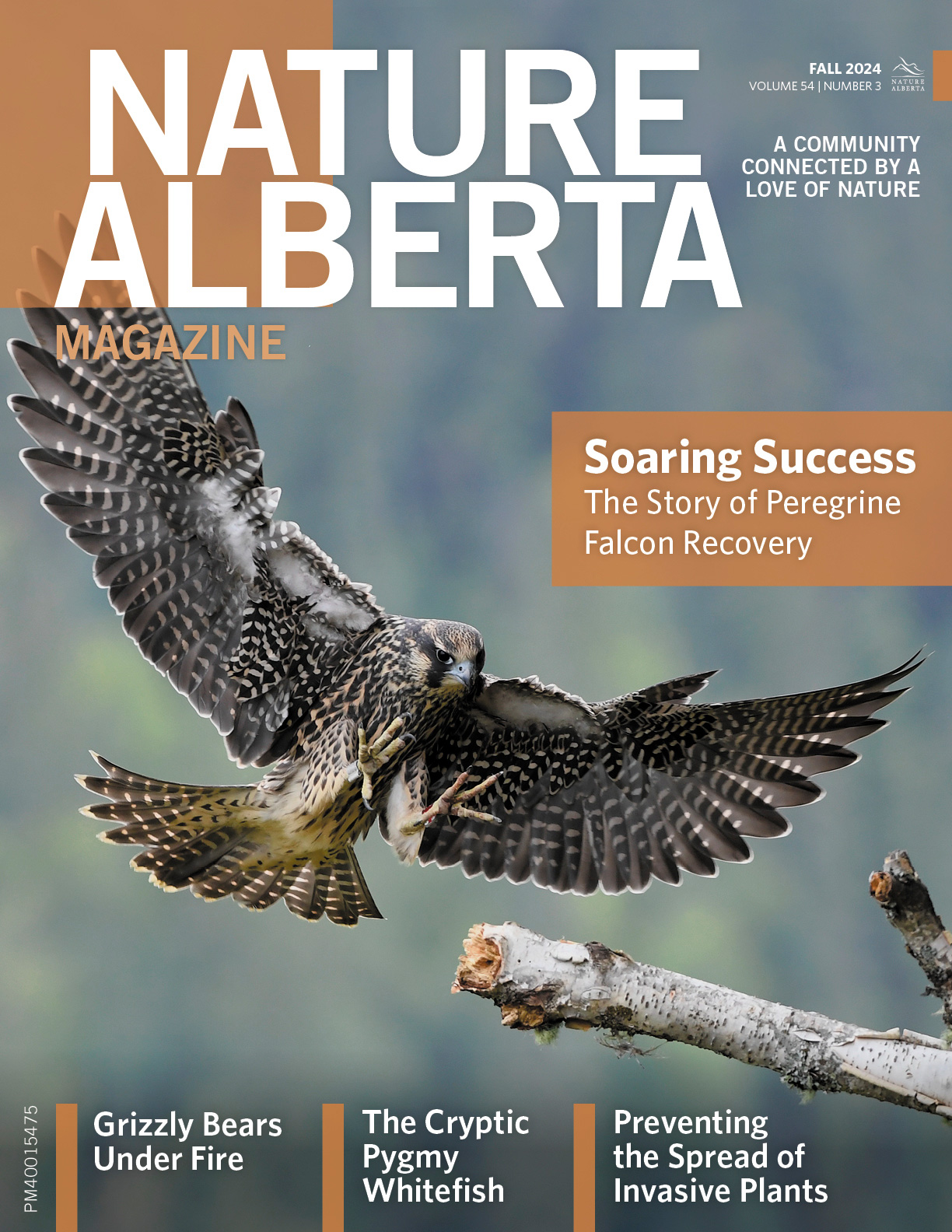Sharing Our Space: Amphibian Roommates
18 October 2024

BY NICK CARTER
As cool autumn weather descends, all sorts of animals search for a safe place to spend the winter. This includes our native amphibian species, some of the northernmost amphibians in the world. Alberta is home to ten amphibians: two salamanders and eight frogs and toads. They tend to be elusive, spending their time in wetlands, under forest leaf litter, or underground. Alberta amphibians hibernate through the winter, usually in a burrow of soft soil or under rotting vegetation. Some species, like the wood frog, have amazing physiological adaptations for surviving being turned into frozen frogsicles.
Sometimes amphibians find their way into the sheltered spaces we create. Folks living near storm ponds may find small species like boreal chorus frogs opportunistically hopping in your front door. The amphibian most commonly found indoors is the tiger salamander. They normally overwinter in damp, dark burrows, but can be drawn to cool, sheltered spaces like garages and basements, which can be quite a surprise for unsuspecting human residents!
Whether or not you like the idea of having a wild salamander for a roommate, it’s important that the invading amphibian not stay indoors. These animals need to keep their skin moist, and won’t live long if they dry out, which is sure to happen inside. So this fall, if you find an unexcepted amphibian guest, do the critter a favour and move it outdoors to a damp place with a lot of plant cover. Make sure to thoroughly rinse your hands before handling the animal, as amphibians can absorb toxic chemicals through their skin, and wash your hands with soap afterwards. You can gently scoop them into a clean container or your hand. Some people might find their cold, slimy skin off-putting, but no amphibian in Alberta is dangerous for people to touch, and they certainly won’t give you warts. Wildlife make much better neighbours than roommates!
Read the Original Article for this Post
For a richer reading experience, view this article in the professionally designed online magazine with all images and graphs in place.
This article originally ran in the Fall 2024 issue of Nature Alberta Magazine (Vol. 54 | No. 3).


